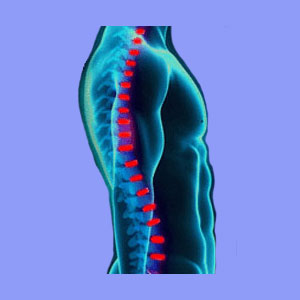
Alexander technique for sciatica is a complementary educational art which has grown in its applications in the modern healthcare system. I have witnessed many Alexander sessions at this point and see both good and bad aspects to the therapy, which is common to many other types of typical sciatica treatment.
One of the primary concepts of Alexander therapy is the idea of Kinaesthesia, which is defined as the ideal way to stand, sit and move. Therefore, patients undergoing Alexander training should expect a variety of postural corrections and adjustment exercises. Unlike many other therapy options, Alexander is not an actual healing art in so much as a way to improve posture and movement habits in an attempt to organically provide sciatica relief.
This essay will provide an overview of Alexander Technique, as it is used to treat sciatica nerve symptoms.
Alexander Technique for Sciatica Explained
As mentioned above, Alexander Therapy practitioners usually liken themselves to teachers more than healers. Many say they do nothing at all to help cure a patient directly, but merely help the student to better understand how stresses can accumulate in the body and lead to pain in various locations. Of course, sciatica is one of those theorized effects.
In most cases, the pain is said to come about due to poor posture habits, poor locomotion habits, non-ergonomic movements and inefficient movements. Stresses in the body need release or they will enact pain. Therefore, the Alexander practitioner is concerned with educating the best ways to move, stand, sit, lie down, speak and every other common activity used during day to day life.
Alexander Technique Facts
Alexander therapy is a very hands-on treatment. Teachers typically maintain touch contact with their students as they talk them through postural and movement corrections. Teachers will also show by example, allowing students to copy their own actions and movements to achieve better results.
Alexander technique is rarely a rigid system of education, but more often allows the teacher to work individually with each student, helping them with exercises which appeal to each student’s particular problem areas.
Learning Alexander technique from a book or video is far more challenging, since without the hands-on portion of the lesson, the student will truly not know if they are getting the movement correct or not, since no one will be there to provide feedback. It is for this reason that I recommend working with a real live teacher for patients who are interested in exploring Alexander therapy.
Alexander Technique for Sciatica Effectiveness
I have mixed feelings about Alexander technique. I do not feel that posture and improper kinaesthesia are the primary causes of sciatica, or any serious chronic pain, for that matter. However, I do feel that most people could benefit from improving their posture and economy of motion.
I see how Alexander can really help many students of the arts, which was its original purpose and application, but I also feel than some practitioners claim a universal cure-all approach similar to the worst chiropractors or acupuncturists. These teachers should be avoided like the plague.
For sciatica sufferers who are interested in learning more about Alexander treatment and feel that their pain may indeed by posture or movement-oriented, then consider getting involved with a teacher on a trial basis. Be wary of long-term commitments, particularly if you do not know how well the treatment will work for you.
Sciatica > Sciatica Treatment > Alexander Technique for Sciatica





